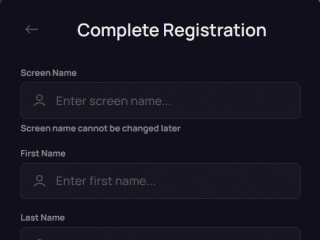The game of poker teaches you to think in a very specific way. I know it might sound crazy, but what if poker players could do a better job of solving problems than the specialists who get paid millions?
I want to talk about a mistake that almost every coach in the NFL makes that a mediocre poker player wouldn't.
You would assume that if somebody gets paid $8 million a year to coach football, they would know what they're doing better than I do- and in most cases, you'd be right. However, they actually make a bunch of mistakes, and some of them are very easy to prove.

Let's get into two-point conversions. There are scenarios where it's obvious that you want to go for a two-point conversion. You score a touchdown towards the end of the game to be down two, kicking the extra point and going down one doesn't help you. So we go for two, and every coach gets that right.
There are some other scenarios that are less obvious to most but are extremely obvious to me. At the end of this, you're going to be better equipped to make these decisions than NFL coaches do.

Let's dive in! Before we talk about why I believe these mistakes are made, I want to get into the math to prove that they are mistakes. Don't worry! It'll be quick and painless.
Example #1
We're going to need one assumption to start with, which is the percentage of the time a team converts going for two. In the NFL, this is 48%, but I'm going to give the coaches the benefit of the doubt and go even lower to 45%.

Let's assume if we go for one, that we're going to make it every time, which is actually not true. It's closer to 95% as of late, but again let's give the coaches that edge.

Your team is down 14 points late in the game. You manage to score a touchdown, well done!
Should you now go for one or go for two?
In this case, many coaches have historically gone for one. I'm going to prove to you why that is a mistake and they should go for two.

Here's how it works. After this touchdown, we go for two, and if we manage to score again. We have another decision to make. When we go for two, there are three distinct things that can happen.
Remember that we're assuming we always make the one-point conversion to make things simpler.
- In the first case, we make the two-point conversion on the first try.
- Next time, we're going to go for one, and we're going to win the game by one point.
- Now the rest of the time, we're going to miss the first two-point conversion, and this can branch off into two outcomes. Either we miss the first and make the second, in which case we go into overtime, or we miss the first and miss the second, in which case we lose.
Now 45% of the time, we are going to make the first and win the game. That's 45% wins. When you do the math on these two branches, you get 25% of the time that you go into overtime and 30% of the time you lose.
Now if you split the overtime into half wins, half losses, we're going to win the game about 58% of the time and lose the game 42% of the time with this strategy.

Whereas if we always went into overtime, we're going to split it 50/50.
58% wins and 42% losses, to me, sounds pretty good in a scenario where otherwise we kick the extra point twice. We go into overtime, we win half the time, or we lose half the time.
Now the reason this works for us is perhaps a little bit unintuitive, but it's that we get an informational edge. We're the team down another score, and we're going to have another decision to make after our second touchdown to go for one or go for two. With the benefit of this information on how our first two-point conversion went, we can make a better decision.
Now I want you to keep that theme in mind as we carry over to the second example, and while the first example is one that many avid fans who are analytical thinkers know, this second one is even less intuitive.
Example #2
Now instead of being down 14, we are down 10. We score a touchdown, and we can either kick the extra point to go down three or go for two.

Now, the reason this situation is a little bit less intuitive and perhaps more scary is that when we go for two, there's no scenario where we tie this game. We are either going to win or lose. But here is how, if you keep in mind our informational edge from the last time, we can use that informational edge to our advantage and go for two this time.
Let's assume that we kick the extra point and it's good, and we get into field goal range, we make that as well.
We tie the game and go into overtime.

So what are the outcomes, if we miss the two-point conversion or make the two-point conversion. Well, if we make the two-point conversion, which can happen 45% of the time, then when we get in field goal range and make that field goal again, we're going to win the game, that's 45% wins. What about the 55% of the time that we miss?
Well, in this case, we have an informational edge. Now when we get in field goal range, we know not to go for the field goal.

The field goal is not going to help us because going down by one doesn't help us. So now we know we need to score a touchdown. We're going to play our drive differently. We're going to go for the touchdown. We're going to go for it on fourth down. We're going to play more aggressively with the clock, etc. Now I don't have a stat for how often NFL teams will score a touchdown once they get into field goal range when they are trying to only score a touchdown. But let's pretend that's 25%.

Now when we've missed our first extra point going for two, we drive down to field goal range, and 25% of the time we're going to score a touchdown and we're going to win the game. The other 75% of that time, we're going to fail to score a touchdown, we're not going to kick a field goal because why would we, and we're going to lose the game.
Here's how the math works out in this scenario.
- 45% of the time, we've made the first two-point conversion, we kick the field goal and we win the game.
- 14% of the time, we have missed the two-point conversion, scored a touchdown, and won.
Those add up to 59%, which leaves 41% of the time that we lose the game. Once again, we've gone from winning half the time and losing half the time, AKA going overtime, to winning 59% of the time and losing 41%.

Now there are many other cases where going for two is right, but these two were very clear-cut, yet coaches often don't do it.
So why do coaches make these mistakes?
1. The first of these reasons is that they don't understand the math.
Now this isn't advanced math. We don't need computing power. We don't need analytics that have only come out in the last 10 years. This is pen-and-paper math that we could have done 300 years ago. But for some reason, they haven't considered it important enough to dive into this math and figure it out. And I think that's really the only reason some coaches don't do it.

2. Now ,the second reason is loss aversion.
Fear of losing, the fear of loss is much greater than the excitement or motivation to win. Tying the game feels safe. Losing feels scary. Winning doesn't overcome that scariness, and so in spots where a coach could go for a win or loss rather than a tie, they opt for the safe route and go for the tie.
You see this in poker all the time.
For example, when a weaker player has a great opportunity to bluff on the river but rather than risk extra money sticking their neck out, they're just content to check back and lose the hand. They can't lose any more money this way. They can't make a scary mistake, although checking back is a mistake, just a less scary one. But they're missing out on winning the pot more often than not because it's such a good bluff spot.

3. The third reason is Game Theory.
Game Theory applies to poker in so many ways, and it is fascinating and super nerdy, and I'm not going to bore you with the details. In this setting, it's really important to understand what game the coaches are playing.
Now I know they're playing football, and in football, you're trying to win. Not exactly.
The interests of the coach don't always align with the interests of the football team or the fans. A coach's goal, whether you're looking at it from the perspective of their life and their happiness or even career ambitions as it relates to winning championships, is to keep their job.
- A coach is going to get paid more money if they keep their job.
- They're going to have a better life if they keep their job.
- They're also going to have an opportunity to win more championships if they keep their job long enough to do so.

How does this factor into going for two? Well, if a coach goes for one and takes the easy route, the safe route, most people in the stands, even the commentators, don't think much of it. It just feels like the thing that you do. They are not at risk of looking like they made a mistake. They're not going to have the fans calling for their job.
If a coach goes for two and loses the game because of it, which is going to happen a large percentage of the time, that might look like a mistake to the fans. It might look like a mistake to the owners, and if you make enough of those mistakes, the fans tend to call for your job. Now if they go for two and win more games because of it, that's great, and the fans will appreciate it, but for some reason, a fan's memory is not quite as good when it comes to wins as when it comes to losses.

Fans love to blame somebody, and the coach making a decision that seems unorthodox is a great person to blame. This, I think, is why you will see some more well-established coaches who have had long successful careers and have a great reputation go for two and make riskier plays because they feel their job is safe and they can now take the +EV route of going for the most points and winning the most games.
To catch the full video, head to Galfond's YouTube channel. The clip takes around 9 minutes to finish.
Checking the poker freeroll schedule to see which events are happening right now – that takes about 20 seconds to finish.
- GipsyTeam's unique promotions
- Help with deposits and cashouts
- Access to private freerolls
- Round-the-clock support
- GipsyTeam's unique promotions
- Help with deposits and cashouts
- Access to private freerolls
- Round-the-clock support
- GipsyTeam's unique promotions
- Help with deposits and cashouts
- Access to private freerolls
- Round-the-clock support
- Уникальные акции от GipsyTeam
- Помощь с депозитами и кешаутами
- Доступ в закрытые фрироллы
- Круглосуточная поддержка
- Уникальные акции от GipsyTeam
- Помощь с депозитами и кешаутами
- Доступ в закрытые фрироллы
- Круглосуточная поддержка
- GipsyTeam's unique promotions
- Help with deposits and cashouts
- Access to private freerolls
- Round-the-clock support
- Уникальные акции от GipsyTeam
- Помощь с депозитами и кешаутами
- Доступ в закрытые фрироллы
- Круглосуточная поддержка
- GipsyTeam's unique promotions
- Help with deposits and cashouts
- Access to private freerolls
- Round-the-clock support
- GipsyTeam's unique promotions
- Help with deposits and cashouts
- Access to private freerolls
- Round-the-clock support
- GipsyTeam's unique promotions
- Help with deposits and cashouts
- Access to private freerolls
- Round-the-clock support
- GipsyTeam's unique promotions
- Help with deposits and cashouts
- Access to private freerolls
- Round-the-clock support
- GipsyTeam's unique promotions
- Help with deposits and cashouts
- Access to private freerolls
- Round-the-clock support
- GipsyTeam's unique promotions
- Help with deposits and cashouts
- Access to private freerolls
- Round-the-clock support
- GipsyTeam's unique promotions
- Help with deposits and cashouts
- Access to private freerolls
- Round-the-clock support
- GipsyTeam's unique promotions
- Help with deposits and cashouts
- Access to private freerolls
- Round-the-clock support
- GipsyTeam's unique promotions
- Help with deposits and cashouts
- Access to private freerolls
- Round-the-clock support
- GipsyTeam's unique promotions
- Help with deposits and cashouts
- Access to private freerolls
- Round-the-clock support
- GipsyTeam's unique promotions
- Help with deposits and cashouts
- Access to private freerolls
- Round-the-clock support
- GipsyTeam's unique promotions
- Help with deposits and cashouts
- Access to private freerolls
- Round-the-clock support
- GipsyTeam's unique promotions
- Help with deposits and cashouts
- Access to private freerolls
- Round-the-clock support
- GipsyTeam's unique promotions
- Help with deposits and cashouts
- Access to private freerolls
- Round-the-clock support
- GipsyTeam's unique promotions
- Help with deposits and cashouts
- Access to private freerolls
- Round-the-clock support
- Уникальные акции от GipsyTeam
- Помощь с депозитами и кешаутами
- Доступ в закрытые фрироллы
- Круглосуточная поддержка
- GipsyTeam's unique promotions
- Help with deposits and cashouts
- Access to private freerolls
- Round-the-clock support
- GipsyTeam's unique promotions
- Help with deposits and cashouts
- Access to private freerolls
- Round-the-clock support
- GipsyTeam's unique promotions
- Help with deposits and cashouts
- Access to private freerolls
- Round-the-clock support
- GipsyTeam's unique promotions
- Help with deposits and cashouts
- Access to private freerolls
- Round-the-clock support
- GipsyTeam's unique promotions
- Help with deposits and cashouts
- Access to private freerolls
- Round-the-clock support
- GipsyTeam's unique promotions
- Help with deposits and cashouts
- Access to private freerolls
- Round-the-clock support
- Уникальные акции от GipsyTeam
- Помощь с депозитами и кешаутами
- Доступ в закрытые фрироллы
- Круглосуточная поддержка
- GipsyTeam's unique promotions
- Help with deposits and cashouts
- Access to private freerolls
- Round-the-clock support
- GipsyTeam's unique promotions
- Help with deposits and cashouts
- Access to private freerolls
- Round-the-clock support
- Уникальные акции от GipsyTeam
- Помощь с депозитами и кешаутами
- Доступ в закрытые фрироллы
- Круглосуточная поддержка
- GipsyTeam's unique promotions
- Help with deposits and cashouts
- Access to private freerolls
- Round-the-clock support
- Уникальные акции от GipsyTeam
- Помощь с депозитами и кешаутами
- Доступ в закрытые фрироллы
- Круглосуточная поддержка
- GipsyTeam's unique promotions
- Help with deposits and cashouts
- Access to private freerolls
- Round-the-clock support
- GipsyTeam's unique promotions
- Help with deposits and cashouts
- Access to private freerolls
- Round-the-clock support
- GipsyTeam's unique promotions
- Help with deposits and cashouts
- Access to private freerolls
- Round-the-clock support
- Уникальные акции от GipsyTeam
- Помощь с депозитами и кешаутами
- Доступ в закрытые фрироллы
- Круглосуточная поддержка
- GipsyTeam's unique promotions
- Help with deposits and cashouts
- Access to private freerolls
- Round-the-clock support
- GipsyTeam's unique promotions
- Help with deposits and cashouts
- Access to private freerolls
- Round-the-clock support
- GipsyTeam's unique promotions
- Help with deposits and cashouts
- Access to private freerolls
- Round-the-clock support
- GipsyTeam's unique promotions
- Help with deposits and cashouts
- Access to private freerolls
- Round-the-clock support
- Уникальные акции от GipsyTeam
- Помощь с депозитами и кешаутами
- Доступ в закрытые фрироллы
- Круглосуточная поддержка
- GipsyTeam's unique promotions
- Help with deposits and cashouts
- Access to private freerolls
- Round-the-clock support
- GipsyTeam's unique promotions
- Help with deposits and cashouts
- Access to private freerolls
- Round-the-clock support























































